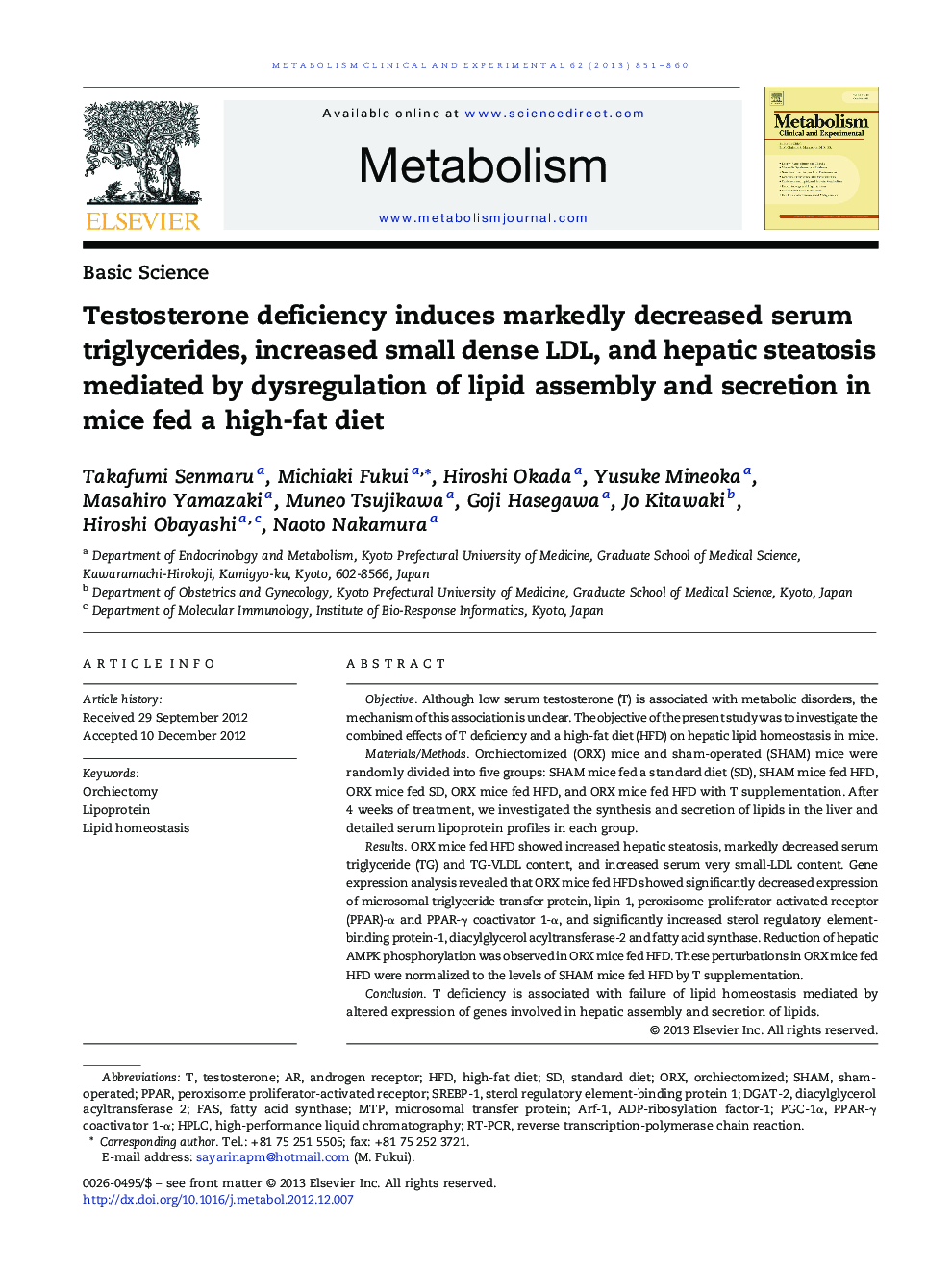| Article ID | Journal | Published Year | Pages | File Type |
|---|---|---|---|---|
| 2805530 | Metabolism | 2013 | 10 Pages |
ObjectiveAlthough low serum testosterone (T) is associated with metabolic disorders, the mechanism of this association is unclear. The objective of the present study was to investigate the combined effects of T deficiency and a high-fat diet (HFD) on hepatic lipid homeostasis in mice.Materials/MethodsOrchiectomized (ORX) mice and sham-operated (SHAM) mice were randomly divided into five groups: SHAM mice fed a standard diet (SD), SHAM mice fed HFD, ORX mice fed SD, ORX mice fed HFD, and ORX mice fed HFD with T supplementation. After 4 weeks of treatment, we investigated the synthesis and secretion of lipids in the liver and detailed serum lipoprotein profiles in each group.ResultsORX mice fed HFD showed increased hepatic steatosis, markedly decreased serum triglyceride (TG) and TG-VLDL content, and increased serum very small-LDL content. Gene expression analysis revealed that ORX mice fed HFD showed significantly decreased expression of microsomal triglyceride transfer protein, lipin-1, peroxisome proliferator-activated receptor (PPAR)-α and PPAR-γ coactivator 1-α, and significantly increased sterol regulatory element-binding protein-1, diacylglycerol acyltransferase-2 and fatty acid synthase. Reduction of hepatic AMPK phosphorylation was observed in ORX mice fed HFD. These perturbations in ORX mice fed HFD were normalized to the levels of SHAM mice fed HFD by T supplementation.ConclusionT deficiency is associated with failure of lipid homeostasis mediated by altered expression of genes involved in hepatic assembly and secretion of lipids.
